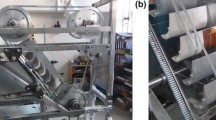Abstract
Modern HP turbine stages consist of highly loaded aerofoils, including transonic and even supersonic flow regions. In terms of stators a normal shock wave in the passage throat chokes the flow, stabilizing the flow conditions at the operating point. In addition to these flow phenomena, the strong acceleration along the early suction side leads to a relaminarisation of the flow, which in turn has a strong impact on the size of the shock induced separation bubble. Finally, the injection of film coolant via rows of cooling holes further influences the boundary layer state. As heat transfer and film cooling effectiveness are of crucial importance in high pressure turbines, an in-depth understanding of transition mechanisms is needed for a competitive design. The main objective was to study transition location effects (from natural transition to fully turbulent) on separation size, shock structure and unsteadiness. The transition interaction with cooling flow was a real challenge for the TFAST project. This research delivered new knowledge, which is crucial for further improvement of HP turbine stages. As transition control devices AJVG and disturbance strip were used.
Access this chapter
Tax calculation will be finalised at checkout
Purchases are for personal use only
Similar content being viewed by others
References
A. Jameson, W. Schmidt, D. Gmbh, E. Turkel, T. Aviv, Numerical solution of the euler equations by finite volume methods using Runge-Kutta time-stepping schemes, in 14th Fluid and Plasma Dynamics Conference (1981)
F. R. Menter, A. V. Garbaruk, Y. Egorov, Explicit algebraic reynolds stress models for anisotropic wall-bounded flows. Prog. Flight Phys., 89–104 (2012)
P. Flaszynski, P. Doerffer, R. Szwaba, Numerical simulations of transonic flow with film cooling and jet vortex generators, in 9th European Conference on Turbomachinery Fluid Dynamics and Thermodynamics. ETC 2011—Conference Proceedings, vol. 2, pp. 1615–1625 (2011)
K. Jung, Mehrreihige Filmkühlung an gekrümmten Oberflächen. PhD, TU Darmstadt, Darmstadt (2001)
A. Savitzky, M.J.E. Golay, Smoothing and differentiation of data by simplified least squares procedures. Anal. Chem. 36(8), 1627–1639 (1964)
F. Kost, P. Giess, Experimental turbine research at DLR Goettingen. J. Gas Turbine Soc. Jpn. 32(6) (2004)
F. Kost, The behaviour of probes in transonic flow fields of turbomachinery, in 8th European Conference on Turbomachinery Fluid Dynamics and Thermodynamics. ETC 2009—Conference Proceedings (2009)
J. Amecke, Auswertung von Nachlaufmessungen an ebenen Schaufelgittern. AVA (1967)
M. Pianko, F. Wazelt, Propulsion and energetics panel working group 14 on suitable averaging techniques in non-uniform internal flows (1983)
R. Kiock, H. Hoheisel, H. J. Dietrichs, A.T. Holmes, The boundary layer behaviour of an advanced gas turbine rotor blade under the influence of simulated film cooling, in AGARD-CP 390, Heat Transfer and Cooling in Gas Turbines (1985)
H. Babinsky, J.K. Harvey (ed.), Shock wave-boundary-layer interactions (Cambridge University Press, Cambridge, UK, 2011)
R.J. Howell, Boundary layer development in the BR710 and BR715 LP turbines—the implementation of high-lift and ultra-high-lift concepts. J. Turbomach. 124(3), 385–392 (2002)
R. Szwaba, Influence of air-jet vortex generator diameter on separation region. J. Therm. Sci. 22(4), 294–303 (2013)
R. Szwaba, P. Doerffer, Separation control by air-jet vortex generators on turbine blades, in Proceedings of the 9th European Turbomachinery Conference (2011)
F. Herbst, A. Fiala, J. Seume, Modeling vortex generating jet-induced transition in low-pressure turbines, J. Turbomach. 136(7), 071005 (2014)
S. Dykas, W. Wróblewski, D. Machalica, Numerical analysis of the losses in unsteady flow through turbine stage. Open J. Fluid Dyn. 3(4), 252–260 (2013)
Author information
Authors and Affiliations
Corresponding author
Editor information
Editors and Affiliations
Rights and permissions
Copyright information
© 2021 Springer Nature Switzerland AG
About this chapter
Cite this chapter
Petersen, A. et al. (2021). WP-4 Internal Flows—Turbine. In: Doerffer, P., et al. Transition Location Effect on Shock Wave Boundary Layer Interaction. Notes on Numerical Fluid Mechanics and Multidisciplinary Design, vol 144. Springer, Cham. https://doi.org/10.1007/978-3-030-47461-4_5
Download citation
DOI: https://doi.org/10.1007/978-3-030-47461-4_5
Published:
Publisher Name: Springer, Cham
Print ISBN: 978-3-030-47460-7
Online ISBN: 978-3-030-47461-4
eBook Packages: EngineeringEngineering (R0)




